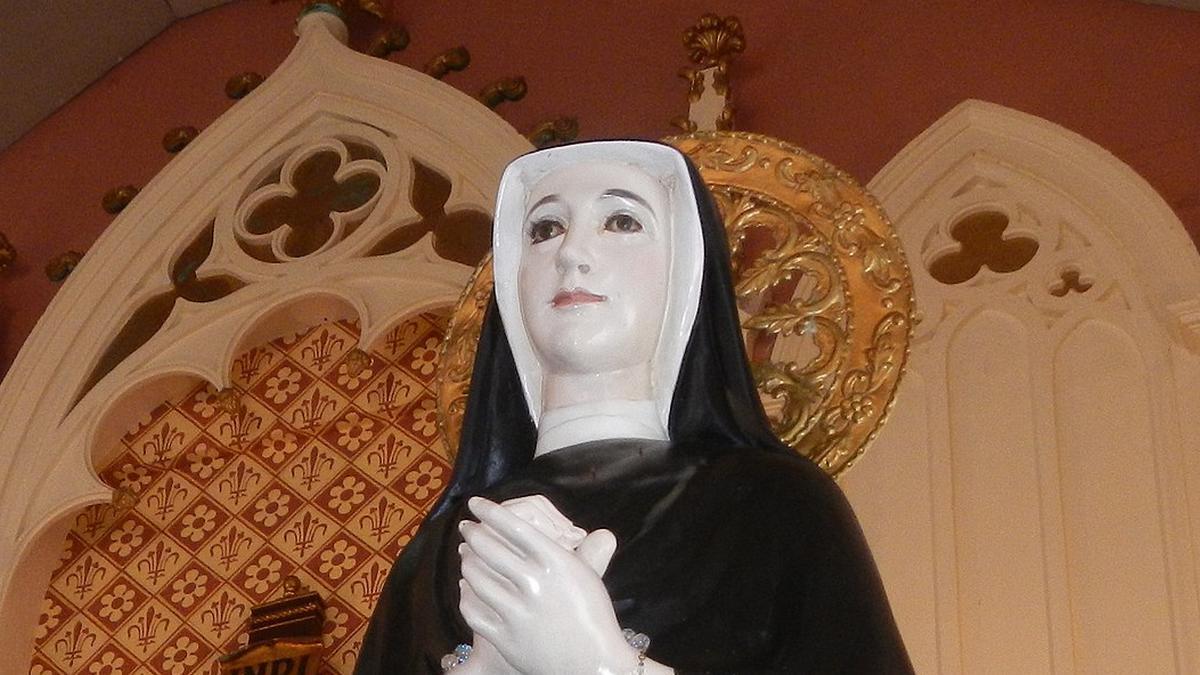Saint Faustina Kowalska of the Divine Mercy Parish Church (Canan, Paniqui, Tarlac) in the Phillipines | Wikimedia Commons (public domain); photographer: Judge Florentino Floro
This week, Catholics celebrated the feast of St. Faustina Kowalska, a Polish woman who had a vision of Jesus describing His Divine Mercy.
“Today we remember #StFaustinaKowalska,” Pope Francis tweeted on Oct. 5. “Through her, God taught the world to seek salvation in his mercy. Let us remember this especially when thinking of the war in #Ukraine. Let us trust in God's mercy which can change hearts. #Peace”
St. Maria Faustina Kowalska’s given name was “Helena,” a report from the National Catholic Register (NCR) said. She was born in Poland on Aug. 25, 1905, and died on Oct. 5, 1938. She joined the Congregation of the Sisters of Our Lady of Mercy when she was 20 and took the name “Maria Faustina.”
In her diary, St. Faustina wrote that Jesus appeared to her wearing white with “red and pale rays emanating from his heart,” the NCR report said. Her diary said Jesus told her, "Paint an image according to the pattern you see, with the signature: ‘Jesus, I trust in You’ [in Polish: ‘Jezu, ufam Tobie’]. I desire that this image be venerated, first in your chapel, and then throughout the world. I promise that the soul that will venerate this image will not perish.”
Her vision of the Lord was meant to save souls who would come to repent and believe in Jesus’ Divine Mercy.
St. Faustina’s diary also outlines her vision of hell, when on a retreat an angel showed her “a place of ‘great torture’ and ‘fire that will penetrate the soul without destroying it — a terrible suffering,’” NCR said. She was shown different levels of hell, similar to Dante’s writing. The diary said, “There are caverns and pits of torture where one form of agony differs from another,” and "there are special tortures destined for particular souls. These are the torments of the senses. Each soul undergoes terrible and indescribable sufferings related to the manner in which it has sinned.” She testified that her visions were true so that more might come to believe and repent.
St. Faustina’s vision and diary helped the Church reinvigorate the message of Divine Mercy, a report from The Divine Mercy said. The report includes the prayer: “St. Faustina, you told us that your mission would continue after your death and that you would not forget us. Our Lord also granted you a great privilege, telling you to 'distribute graces as you will, to whom you will, and when you will.' Relying on this, we ask your intercession for the graces we need, especially for the intentions just mentioned. Help us, above all, to trust in Jesus as you did and thus to glorify His mercy every moment of our lives. Amen”
Pope St. John Paul II called St. Faustina "the great apostle of Divine Mercy in our time." He canonized her in 2000.
St. Faustina’s “Diary: Divine Mercy in My Soul,” which was written in her own words on the account of her vision, is available for purchase on Amazon.
Philip Kosloski, writing for Aleteia, claimed that St. Faustina had a special devotion to the Rosary. She would pray the Rosary on Saturdays specifically, as Saturday is a reminder of the day the Blessed Virgin Mary prayed for her Son after he was crucified. She received a message from Jesus giving her permission “on Saturdays, to say five decades of the Rosary with outstretched arms,” her diary said.
St. Faustina’s funeral was held on Oct. 7, the feast of the Rosary.







 Alerts Sign-up
Alerts Sign-up